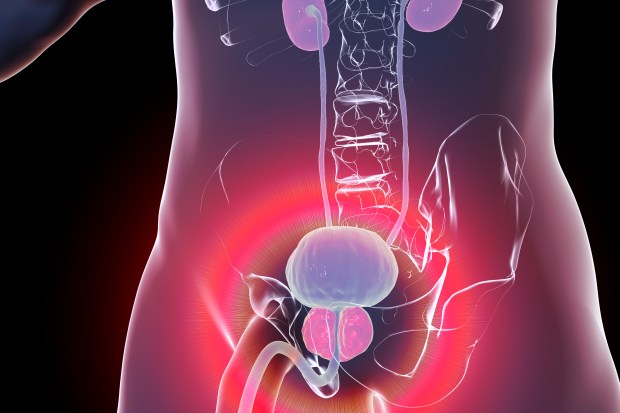SIR Chris Hoy has revealed his cancer “feels like drowning” as his wife was left “in a daze of shock” by the double blow of her MS diagnosis.
Britain’s most successful Olympian, 48, revealed his terminal prognosis at the weekend after announcing in February that he had been diagnosed with cancer.
His wife Sarra, 40, was also diagnosed with a “very reactive and aggressive” type of MS around the same time.
In excerpts published by The Sunday Times of Hoy’s autobiography All That Matters he spoke about the moment he learned he had cancer.
Hoy said: “The doctor turns the screen to me to reveal the scan in all its grainy detail and the tumour that is currently in my shoulder.
“Hearing the word ‘cancer’ has had an immediate and profound effect on me, and not just me.
“In one short moment, life has changed irrevocably.”
He described the “dark moments” in the early days of his treatment as a “drowning sensation”, but added that he’s since become better able to cope.
The six-time Olympic gold medallist also opened up about learning Sarra had MS.
She’d been told her diagnosis over the phone a month before she broke the news to Hoy.
Hoy said: “I immediately broke down, distraught both by the news and the fact she’d received it without me there.”
He explained that Sarra went to her own appointment just seven days after his cancer diagnosis in a “daze of shock”.
Hoy had said in a previous interview with the Sunday Times: “You know, we were all born and we all die, and this is just part of the process.
“You remind yourself, aren’t I lucky that there is medicine I can take that will fend this off for as long as possible?”
His diagnosis came after his father and grandfather were both diagnosed with prostate cancer.
In September 2023, a doctor delivered the awful news to Hoy that he had Stage 4 cancer.
What was first diagnosed as a tumour in his shoulder, the primary cancer was located in his prostate.
What are the symptoms of prostate cancer?

Symptoms of prostate cancer can include:
- Needing to pee more frequently, often during the night
- Needing to rush to the toilet
- Difficulty in starting to pee (hesitancy)
- Straining or taking a long time while peeing
- Weak flow
- Feeling that your bladder has not emptied fully
- Blood in urine or blood in semen
Source: NHS
It had then unfortunately spread to his bones, pelvis, hip, spine, shoulder and rib.
Medics have given Hoy two to four years to live.
Sarra’s condition was spotted when she went for a scan after experiencing a tingling sensation in her face and tongue.
The Scottish cycling hero shared a touching video on social media just days ago.
He thanked fans for their support following his devastating diagnosis.
The cyclist said in the video: “Hi everyone, I just wanted to share an update about my health, after telling you that I was receiving treatment for cancer.
“I’m so grateful to everyone for their incredible kindness and support.
“You have heard by now that I’m ready to share that my cancer is stage 4: I will be living with it for the rest of my life.
“Now it’s not the news anyone imagines hearing, and it obviously came as a huge shock.
“We’ve taken time to process it as a family and I now have a deep resolve to turn this incredibly difficult diagnosis into something more positive that can help not just me, but anyone anywhere living with stage 4.”
NO CURE What is multiple sclerosis and what are the symptoms of MS?
MULTIPLE sclerosis can affect the spinal cord as well as the brain causing nerve damage and lifelong ailments.
Here is all you need to know about the condition which affects around 100,000 people in the UK.
What is multiple sclerosis (MS) and how do you get it?
Exactly what causes MS is unknown, but it is suggested that the condition occurs from a mixture of genetic and environmental factors.
MS is an autoimmune condition. This means that the body’s immune system (designed to fight any infection or foreign body in your system) mistakes an area of the body for a threat and attacks it.
In the case of MS, the most common areas for the immune system to fight are the myelin sheaths (layers that cover and protect your nerves while also helping them transmit signals around the body) in the brain and/or spinal cord.
This can slow down the nerve signals, jumble them up or stop them completely, leading to a loss of control over certain functions in the body.
There are three main types of MS that a person can develop:
- Relapsing-remitting MS – where people have distinct attacks of symptoms which come and go. Around 85 per cent of people have this type
- Primary progressive MS – this type affects about 10-15 per cent of those diagnosed (generally those diagnosed in their 50s) and it means that the condition continues to get progressively worse
- Secondary progressive MS – neurologists generally agree that this is a “sustained build-up of disability, independent of any relapses” according to MS Society
There is also a condition called Benign MS, but this is only diagnosed if a person thought to have MS has gone 15 years with no symptoms, and has little or no disability as a result of previous attacks.
What are the symptoms of MS?
The condition affects every sufferer differently, but there are a few common symptoms.
Most people will only experience a few of these symptoms, not all.
They are also very similar to symptoms for a lot of other conditions, so are not necessarily caused by the disease.
A more detailed list of specific symptoms is available on the MS Society website.
- Fatigue
- Vision problems
- Numbness and tingling
- Muscle spasms, stiffness and weakness
- Mobility problems
- Pain
- Problems with thinking, learning and planning
- Depression and anxiety
- Sexual problems
- Bladder problems
- Bowel problems
- Speech and swallowing difficulties
Who does MS affect and how is it diagnosed?
Multiple sclerosis can affect everyone and anyone regardless of race or gender, however, it is two to three times more common in women than in men.
It is usually diagnosed between the ages of 20 and 30.
The immune system’s attacks on the myelin sheath cause it to become inflamed and this is then visible in an MRI (magnetic resonance imaging) machine.
MS can also be diagnosed by a lumbar puncture, otherwise known as a spinal tap.
This procedure involves inserting a hollow needle into the base of the spine (the lumbar region) and removing a sample of cerebrospinal fluid (CSF) which surrounds the brain and the spinal cord.
This fluid is then analysed, looking for signs that the immune system has been fighting there, such as increased white blood cells.
How is multiple sclerosis treated?
There is currently no cure for MS, but the symptoms can be treated with medications and other treatments.
Doctors have revealed a stem cell transplant could be a breakthrough development for those with MS.
An international trial showed it was possible to improve symptoms by wiping out the patient’s immune system using cancer drugs, then rebooting it with a stem cell transplant.
The results were released at the annual European Society for Bone and Marrow Transplantation in Lisbon.
Currently, the typical treatment type depends on the specific symptoms and difficulties faced by the individual affected.
It can include:
- treating relapses of MS symptoms (with steroid medication)
- treating specific MS symptoms
- treatment to reduce the number of relapses (disease-modifying therapies)
For more information about specific treatments and support, visit the NHS website.








